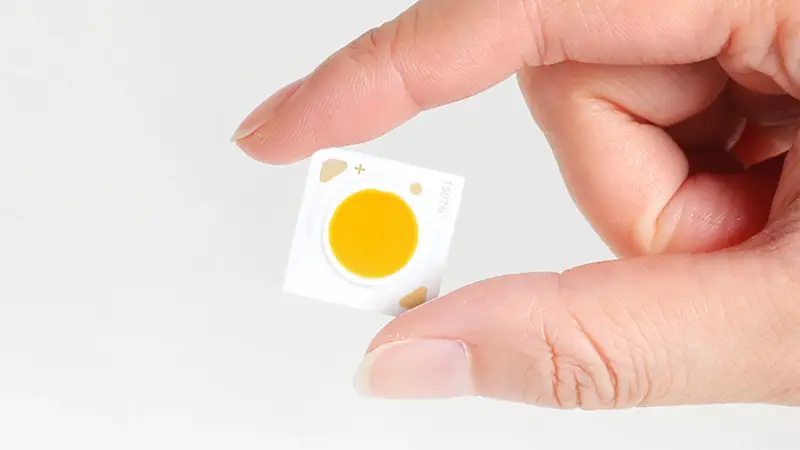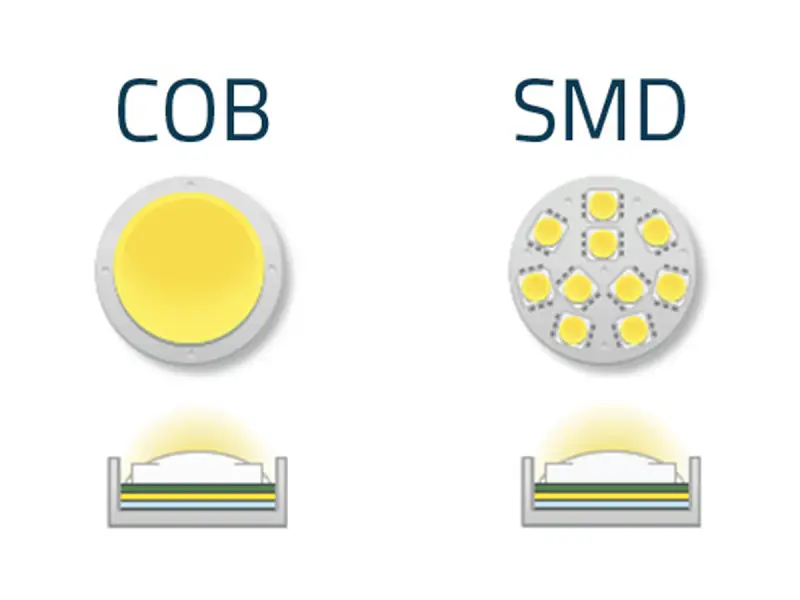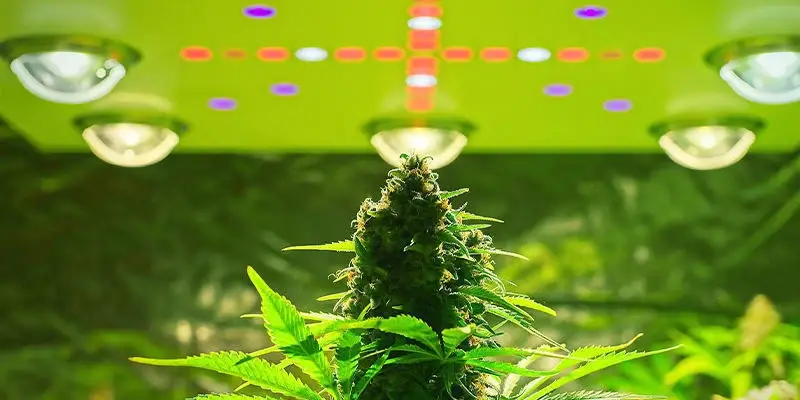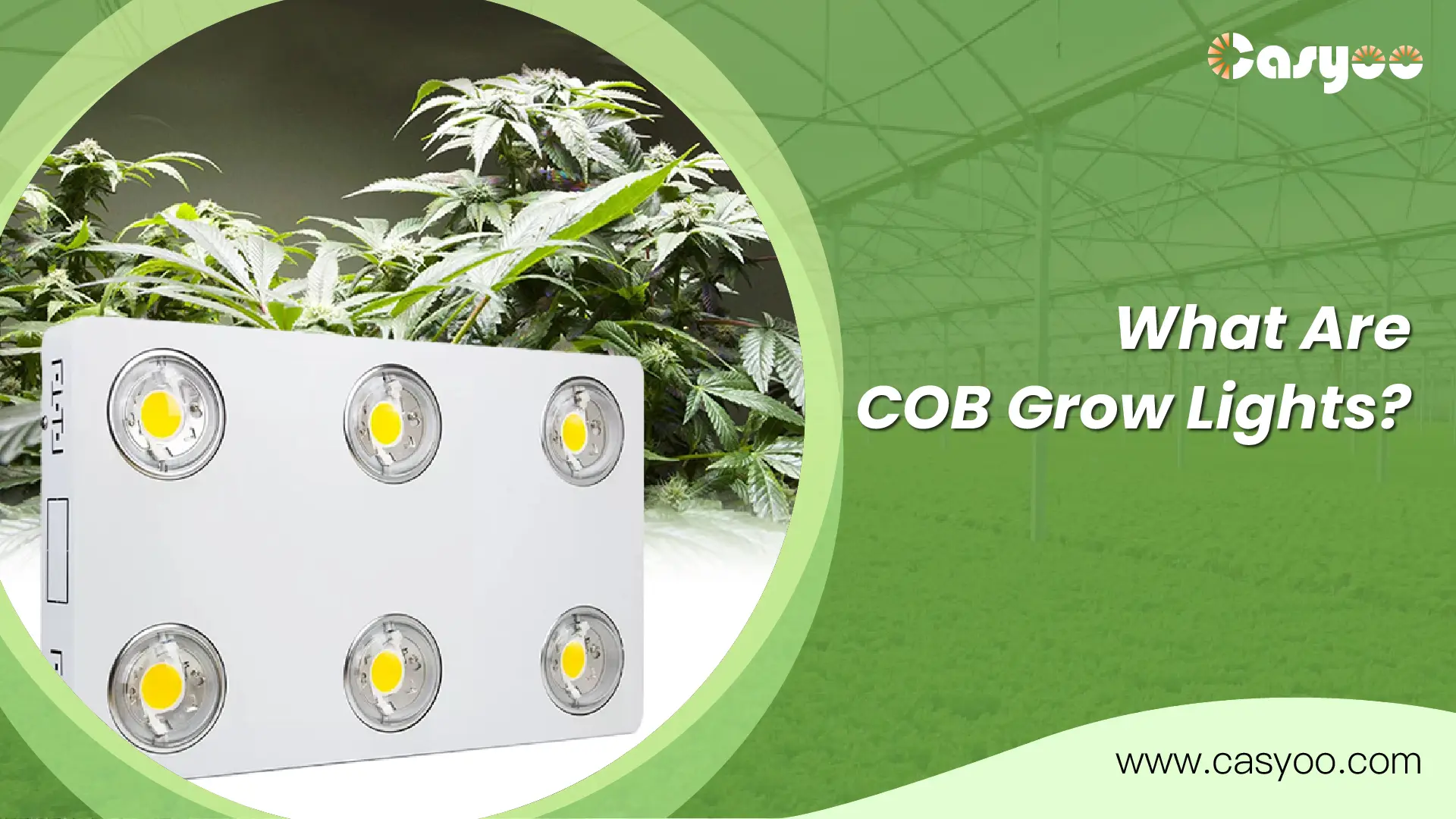Whether growing indoors or in a greenhouse, LED grow lights have always been the first choice for hobbyists or commercial growers. However, a major disadvantage of LED grow lights is that they are large, making them difficult to fit into small spaces. This is why COB grow lights appear. This kind of grow light has great light intensity for most plants but takes up little space.
What is a COB grow lighting?

Chip-on-Board(COB) is an LED packaging technology. It gets its name because LED chips are mounted on a circuit board to create an LED array. Multiple extremely small LED chips are connected and packaged into a ceramic or copper plate so they can be used as the sole light source.
With this mounting method, tiny chips are tightly connected together to create an intense and concentrated light output. This mounting method also speeds up heat dissipation and reduces the chance of overheat. When the COB LED light is powered, it looks more like a lighting panel rather than using multiple individual lights like SMD LEDs mounted closely together. Additionally, they are lightweight and more energy efficient than other LED types, making them ideal for indoor lighting solutions.
COB grow lights minimize the components used and maximize the quantity of LED chips on the circuit because of the way COBs are built. This gives COB grow lights many advantages over traditional SMD grow lights, which we will discuss below.
Advantages of COB over SMD grow lights

SMD grow lights are the most common LED grow lights on the market. Although SMD and COB have some similar characteristics, such as long life, energy saving, and eco-friendliness, COB has its own advantages.
Smaller size
The efficiency of LED grow lights is already much higher than that of HSP grow lights, but high-power SMD LED grow lights cannot be installed in small spaces. The greater the power, the larger the size of the LED grow light. Today, COB technology increases power density. COB’s packaging structure allows a single driver to power multiple chips, resulting in more light output per square inch. Therefore, under the same power, COB grow lights can maximize the use of the available area of the growing room than SMD while providing effective high-quality lighting for plants.
Deeper canopy penetration
As more diodes are packed into a small space, the light density increases significantly. Since these multiple diodes act as one large LED chip, the light they emit is more intense and is able to penetrate deeper into the plant canopy.
Full spectrum
Unlike SMD LEDs, they emit full spectrum white light. This means no more purple light in your grow room. Growers can more easily and promptly identify signs that may indicate a fungal attack, burn, or other threats to plant health.
COB technology also has a higher color rendering index, which means the human eye sees plants under a COB LED grow light as their natural color.
Emit Less heat
The COB structure contains fewer components, it tends to produce less heat than SMD LEDs. Additionally, the material of the substrate are typically aluminum, copper, or ceramic, which can act as an efficient heat conductor, especially when combined with an external heat sink. Therefore, the heat generated by COB lights can be effectively dissipated, thereby extending the life of the lamp itself and reducing the risk of burning your plants. We recommend that you look for high-quality COB LED fixtures, such as Casyoo, as the reliability of their materials is guaranteed.
More reliable
COBs have significantly lower failure rates compared to SMDs, partly because they dissipate less heat. What’s more, COBs require minimal soldering since they are attached directly to the substrate. This further reduces the risk of potential failure of the grow light.
Stronger light intensity
COBs can connect more LED chips on the same circuit board than traditional SMDs, so they produce stronger light intensities with higher uniformity.
More concentrated light
Since there are more LED chips packed into space and with the help of reflectors, the light produced by COB grow lights is more intensive, which can provide stronger light intensity to flowering plants such as medicinal cannabis.
Disadvantages of COB compared to SMD grow lights

Fixed Spectrum
Although it is not possible to fit as many LED chips on each array, SMD chips can still accommodate multiple contacts. Every chip can feature up to 3 diodes, each of which also has a separate circuit. This allows SMD chips to come in a variety of colors – red, blue, green, and purple diodes. Additionally, you can mix these colors to achieve a specific spectrum.
On the other hand, although COB grow lights contain many diodes, they only accommodate 2 contacts and 1 circuit. Therefore, the spectrum of COB grow lights is fixed, generally white light.
SMD offers a wider range of light output
SMD LED provides more light distribution than COB LED. In this sense, traditional SMD LEDs have better light coverage and penetration into the plant canopy, which makes them suitable for use in open growing areas.
Failure leads to light output loss
If a COB fails, it results in a significant loss of light output because the COB is made up of multiple diodes grouped together. On the other hand, with SMD LEDs, the failure of one diode may not have a significant impact on the overall light output.
Final thoughts
Nowadays, it’s hard to find fine and cheap LED grow lights. We recommend the Casyoo COB LED. They produce good light output, have premium Meanwell drivers and have a 3-year warranty. Besides, they have received rave reviews from customers around the world. Don’t hesitate to contact us!




